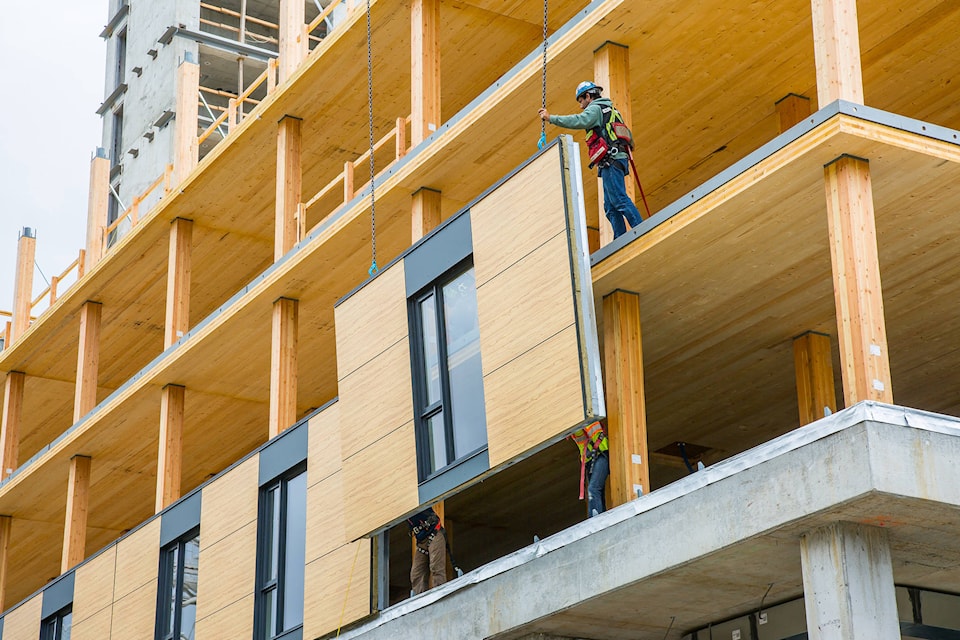A Penticton-based wood construction executive isn’t counting on any significant windfall for his business as steel tariffs continue in an escalating trade dispute between Canada and the U.S.
However, Hardy Wentzel, CEO of Penticton wood construction company Structurlam, did say developers may take a second look at wood for their structures down the line.
The U.S. slapped tariffs on Canadian, Mexican and European Union steel and aluminum starting midnight June 1, and was promptly met with Canadian tariffs on U.S. imports.
Canadian tariffs, coming into effect July 1, are a dollar-for-dollar countermeasure on a total of $16.6 billion worth of imports. The tariffs include various steel products, wiring, yogurt, maple syrup, pizza and whisky among dozens of other products.
Related: Penticton’s Structurlam continues to rise
While tariffs only directly apply to U.S.-Canada traded steel, Wentzel noted that when the cost of U.S. steel goes up in Canada, domestic steel trade will rise in price to match that of their U.S. competitors.
Working in the wood business, Wentzel knows that pain all too well — the federal government calls softwood lumber dispute with the U.S. “one of the most enduring trade disputes between both nations.”
However, Wentzel said Structurlam has largely skirted the duties on their own products because those duties don’t often target products with value added — products like steel or wood with additional production stages to create an enhanced product.
Related: Penticton company beaming with pride
When it comes to the steel tariffs, Wentzel said typically developments currently under construction likely won’t make the switch to wood, as it would likely cost developers on redesign. However, those entering the planning stages of a development may broaden their scope.
“The developer might tell his architect, ‘hey, let’s look at a wood option. I just want to know,’” Wentzel said. “Potentially. But it depends. It depends on the building type, it depends on how much steel is in the building. Is it worth the change? Is it not?”
However, because steel is a stronger product, using wood would require more support beams and other infrastructure to keep the building sturdy.
“I would actually have to add more volume of wood to compete with the volume of steel. So you do all the maths and the comparisons, it might just go ‘that’s a wash, continue with the steel,’” he said.
With that said, Structurlam does keep expanding its operations, and while steel tariffs aren’t a factor, some recent and future developments are fuelling wood construction.
In 2009, B.C. became the first province to allow five- and six-storey mid-rise buildings to be constructed from wood, according to the Canadian Wood Council. That was followed by Quebec in 2013, Ontario and Alberta in 2015 and the City of St. John in 2017.
And upcoming changes to building codes, Wentzel said, are expected to expand that up to 12-storey buildings. A student residence at the University of B.C., the world’s tallest wood building at 18 storeys, was completed in 2016.
Because the changes in technology are seeing more widespread faith in wood construction for larger structures, wood is seeing somewhat of a resurgence.
Wentzel also had full praise for South Okanagan—West Kootenay member of Parliament Richard Cannings. The rookie NDP politician’s bill to mandate the federal government consider wood when constructing infrastructure passed its final vote in the House of Commons in May, and was sent to the Senate for debate.
But fuelling that even more is the environmental impacts of wood versus steel and concrete — the latter of which towers wood in ozone depletion, global warming potential and water contamination, among other environmental factors. And while steel is not so damaging as concrete, it still has harsher impacts on the environment than wood.
As society becomes more environmentally conscious, Wentzel said he’s been seeing more developers turn to wood for their construction.
